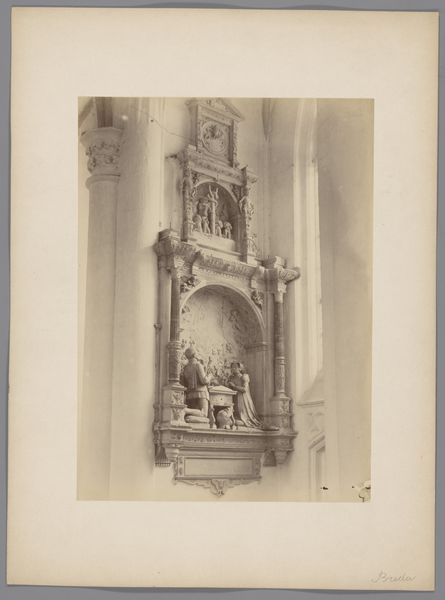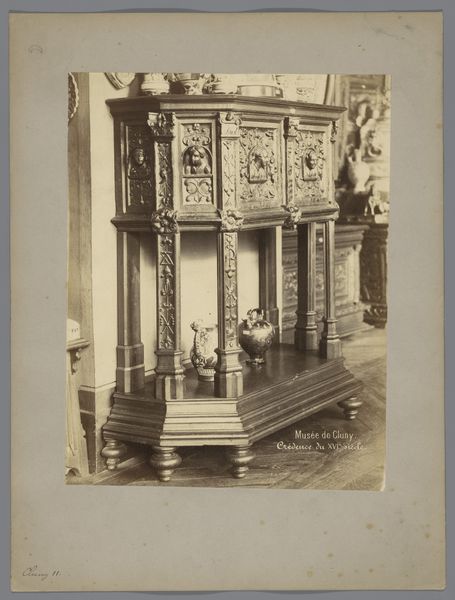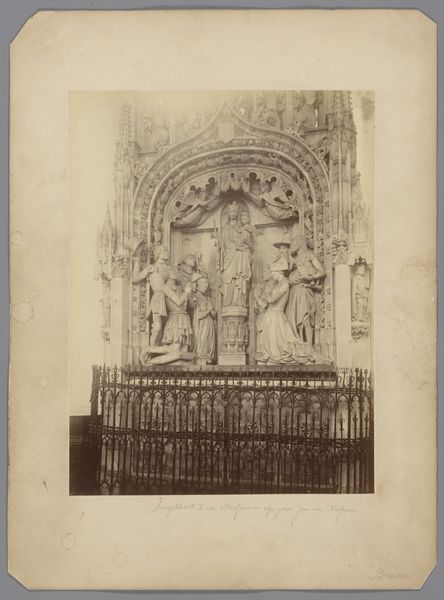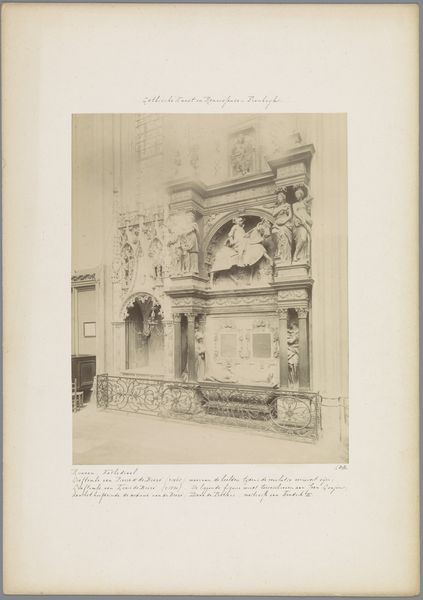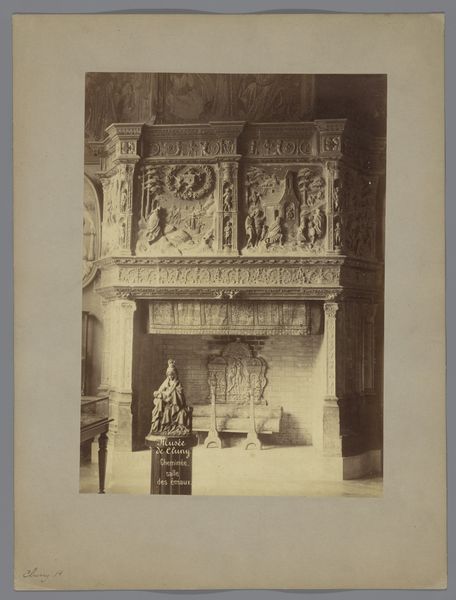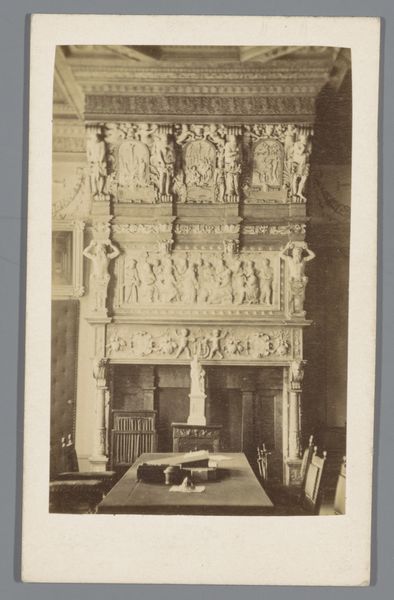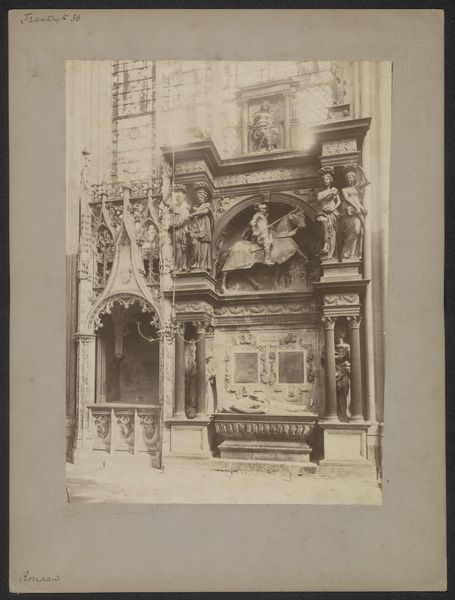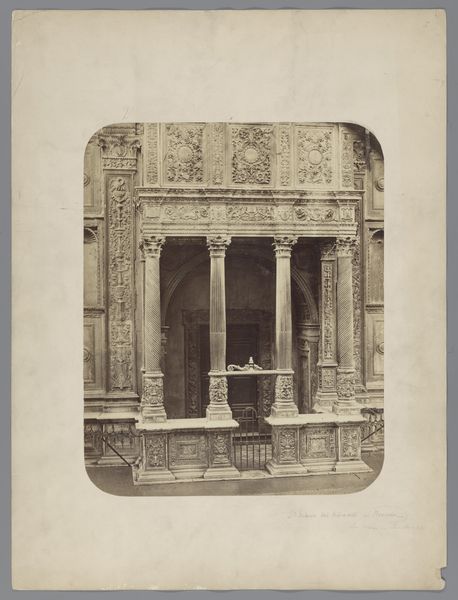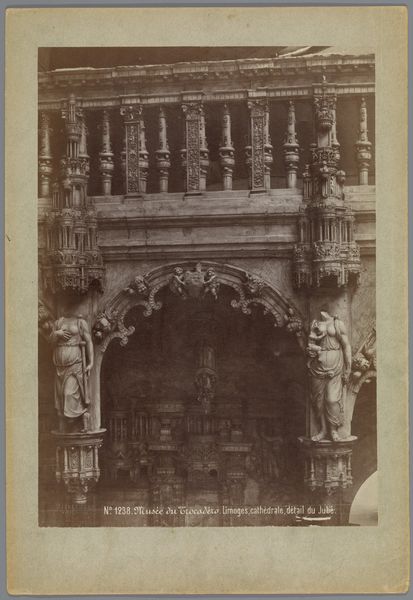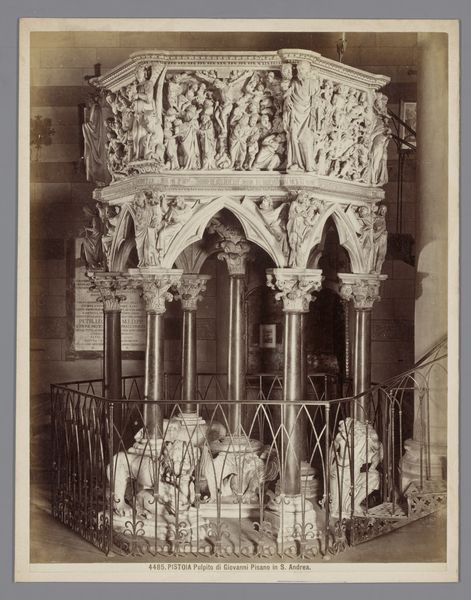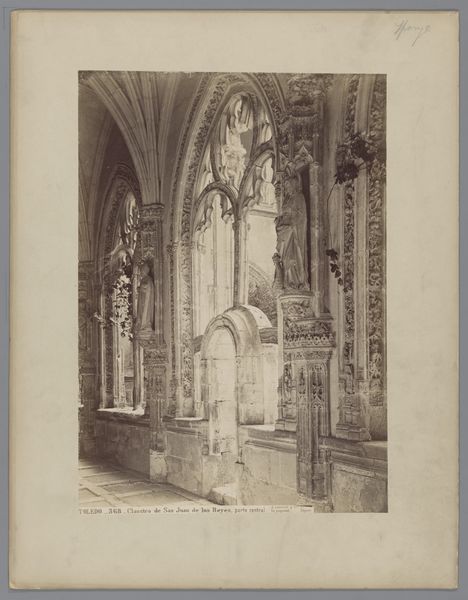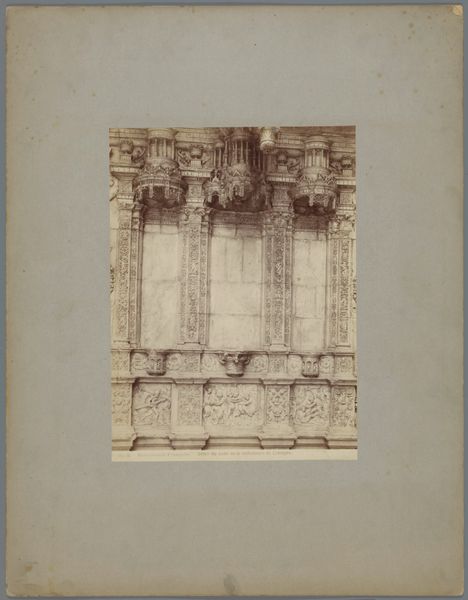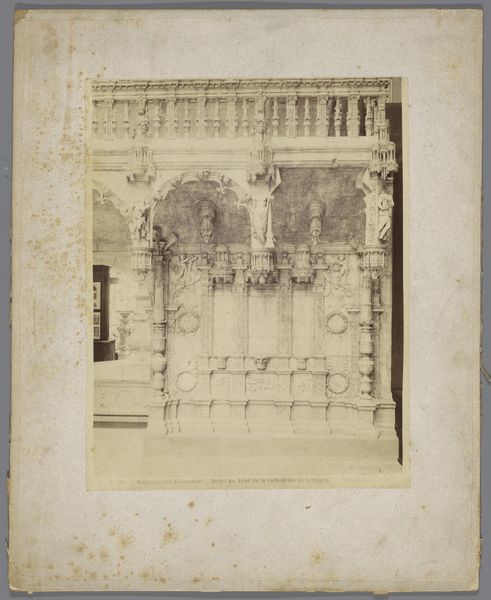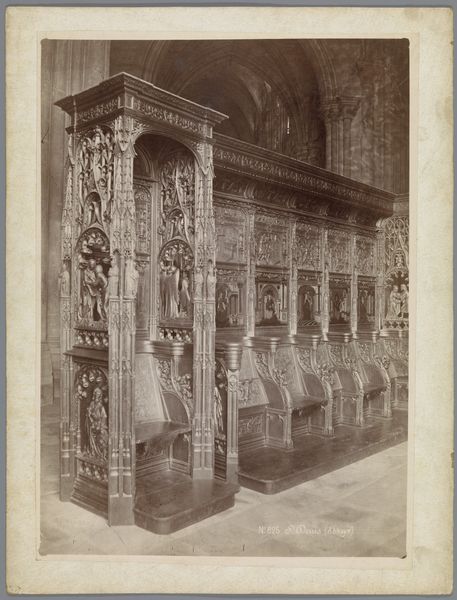
Graftombe van de kardinalen van Amboise in de Kathedraal van Rouen c. 1875 - 1900
0:00
0:00
photography, gelatin-silver-print, architecture
#
medieval
#
photography
#
gelatin-silver-print
#
architecture
Dimensions: height 274 mm, width 204 mm
Copyright: Rijks Museum: Open Domain
This photograph captures the Graftombe van de kardinalen van Amboise in the Kathedraal of Rouen. The tomb is replete with symbolic gestures and iconography. Notice how the two kneeling figures of the cardinals convey profound humility and piety, their bodies angled in eternal supplication. Consider how kneeling has appeared across cultures, from ancient Egyptian depictions of pharaohs before their gods to the Christian tradition of prayer. In each instance, the gesture signifies submission and reverence, a primal acknowledgment of a higher power. But what psychological forces drive this persistent motif? Perhaps it taps into our collective memory of dependence, echoing the infant’s posture of reliance on a caregiver. The act of kneeling, therefore, becomes a powerful visual symbol, engaging viewers on a subconscious level and evoking feelings of awe and reverence. This act, in its essence, represents a cyclical journey through time. It resurfaces, evolves, and takes on new meanings in different historical contexts, yet always retains the core essence of humanity's relationship with the divine.
Comments
No comments
Be the first to comment and join the conversation on the ultimate creative platform.
